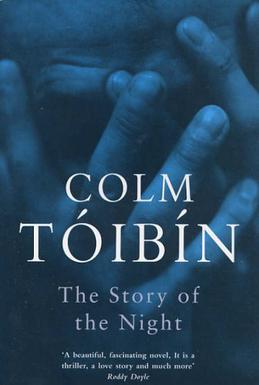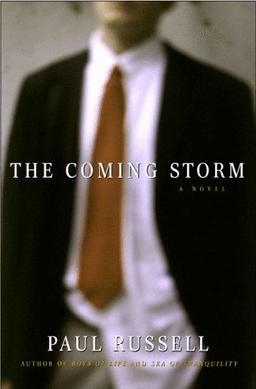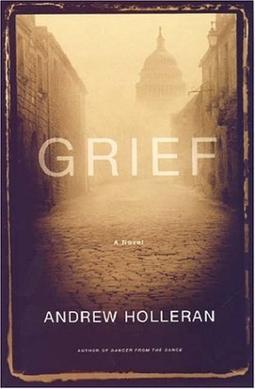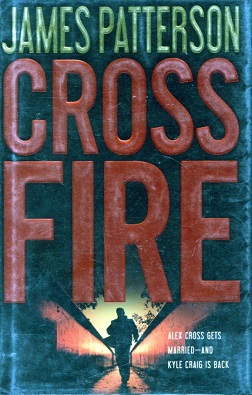
The Invisible Man is a science fiction novel by H. G. Wells. Originally serialised in Pearson's Weekly in 1897, it was published as a novel the same year. The Invisible Man to whom the title refers is Griffin, a scientist who has devoted himself to research into optics and who invents a way to change a body's refractive index to that of air so that it neither absorbs nor reflects light. He carries out this procedure on himself and renders himself invisible, but fails in his attempt to reverse it. A practitioner of random and irresponsible violence, Griffin has become an iconic character in horror fiction.

The Monk: A Romance is a Gothic novel by Matthew Gregory Lewis, published in 1796. Written early in Lewis's career, it was published before he turned twenty. In one letter, he claimed to have written it in ten weeks, but other correspondence suggests that he had at least started it, or something similar, a couple of years earlier. It is a prime example of the type of Gothic that specializes in horror.

Invisible Monsters is a novel by American writer Chuck Palahniuk, published in 1999. It is his third novel to be published, though it was his second written novel. The novel was originally supposed to be Palahniuk's first novel to be published, but it was rejected by the publisher for being too disturbing. After the success of his novel Fight Club, Invisible Monsters was given a second chance, and a revised version of it was published. The first edition was released in paperback in 1999, and on June 11, 2012, it was published in hardcover, in a revised edition titled Invisible Monsters Remix (ISBN 978-0393083521).

Griffin, also known as the Invisible Man, is a fictional character who first appeared as the protagonist of H. G. Wells' 1897 science fiction novel The Invisible Man. In the original work, Griffin is a scientist whose research in optics and experiments into changing the human body's refractive index to that of air results in him becoming invisible. After becoming invisible, he wraps his head in bandages and dons a pair of goggles or glasses in order to enable others to see him. Unable to reverse the invisibility process, he descends into insanity and becomes a criminal.

The Story of the Night is a bildungsroman by Irish novelist Colm Tóibín. The novel interweaves the personal story of Richard Garay, a gay Argentinian man with an English mother, and the political history of Argentina through the late 1970s, 1980s and early 1990s.
The Class is an American sitcom that originally ran on CBS from September 18, 2006, to March 5, 2007. The series followed the lives of eight very different alumni of the fictional Woodman Elementary School. The show was created by David Crane and Jeffrey Klarik's production company CraneKlarik in association with Warner Bros. Television.

The Coming Storm is a 1999 novel by Paul Russell.

The Man Who Haunted Himself is a 1970 British psychological thriller film written and directed by Basil Dearden and starring Roger Moore. It is based on the 1957 novel The Strange Case of Mr Pelham by Anthony Armstrong, and is a variation on the Jekyll and Hyde story.

Grief is a novel by American author Andrew Holleran, published in 2006. The novel takes place in Washington D.C., following the personal journey of a middle-aged, gay man dealing with the death of his mother. The novel received the 2007 Stonewall Book Award.

Rainbow Boys is the first novel in a trilogy by Alex Sánchez, focusing on the issues gay and questioning youth face as they come of age. This book is followed by Rainbow High and Rainbow Road.

Oliver Fish is a fictional character on the ABC daytime drama One Life to Live. He was portrayed by Scott Evans from January 15, 2008, through April 12, 2010. The June 2009 announcement that the character would be romantically linked to another man in an ongoing story line came to wider attention when Patricia Mauceri was replaced after reportedly voicing personal religious objections to her character's involvement in the plot.
Supermale is a 1902 novel by French author Alfred Jarry. Its irreverent, darkly-humorous storyline contains elements of science fiction. The novel, Jarry's last, revolves around a race between a train and a team of cyclists fuelled by perpetual-motion food and the exploits of a "supermale" capable of prodigious feats of endurance and sexual athleticism. Supermale was translated into English by Barbara Wright in 1968.

Arthur Mitchell, often referred to as the "Trinity Killer," is a fictional character and the main antagonist of the fourth season of the Showtime TV series Dexter. Mitchell is a serial killer who presents himself as an unassuming church deacon and family man. FBI agent Frank Lundy dubs him the "Trinity Killer" because of a recurring pattern of three killings based on traumatic events during Arthur's childhood. In the series, Mitchell is portrayed by John Lithgow.

Angelo "Angel" Juan Marcos Batista is a fictional character in the Showtime television series Dexter and the novels by Jeff Lindsay upon which it is based. He is portrayed in the television series by David Zayas. Batista spends much of the series as a Sergeant before being promoted to Lieutenant in the final season.
"Hello, Dexter Morgan" is the 11th and penultimate episode of the fourth season of Showtime TV series, Dexter, which aired on December 6, 2009. The police team attempt to get Christine Hill to talk while Dexter frames another man in order to get Arthur Mitchell, the Trinity Killer, all to himself.

Cross Fire is the 17th book of James Patterson's Alex Cross series. In the novel, Kyle Craig has come back for one final scare to finally kill Alex Cross, but Alex has a special day ahead of him, one that concerns Bree and his relationship. The novel was released in hardcover, paperback, and audio book on November 15, 2010. It was preceded by I, Alex Cross and was followed by Kill Alex Cross. The book sees Alex marrying Bree after proposing to her in the previous book; the book also sees the final appearance of Kyle Craig, who dies by shooting an oxygen tank, killing him and two cops before he can be sent to prison again by Alex.
Alex Cross is a crime, mystery, and thriller novel series written by James Patterson. The protagonist of the series is Alex Cross, an African-American Metropolitan Police Department detective and father who counters threats to his family and the city of Washington, D.C. Supporting characters include two of Cross's children, Damon, and Janelle, as well as his grandmother Nana Mama. The series is usually narrated in first-person perspective by Alex Cross, and occasionally from the villains' point of view in third-person.













